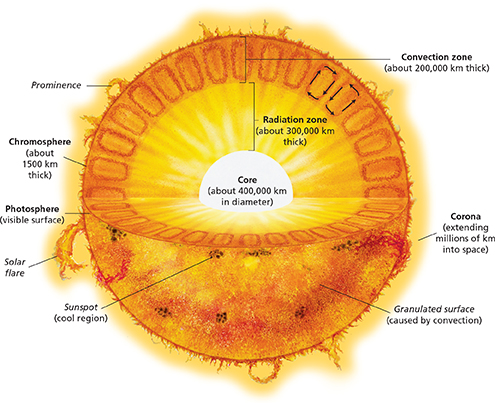The Sun's Interior
Astronomers cannot see inside the sun. However, they are able to infer the structure of the sun's interior. They use mathematical models and observe vibrations of the sun that are similar to vibrations caused by earthquakes on Earth. The sun's interior and atmosphere are divided into several layers with distinct characteristics. The sun's interior consists of the core, the radiation zone, and the convection zone. Figure 4 illustrates the structure of the sun.
Core
The sun's core is its central region, where nuclear fusion occurs. The core has a diameter of about 400,000 kilometers, a little more than a quarter of the diameter of the entire sun.
Radiation Zone
You are able to see the sun because some of the energy produced in its core travels outward and escapes into space as visible light. Energy moves through the sun in two main ways: by radiation and by convection. As energy moves outward from the sun's core, it first enters the radiation zone. The radiation zone is a region of highly compressed gas. Here, energy is transferred by the absorption and reradiation of electromagnetic waves. Because this region is so dense, energy can take more than 100,000 years to pass through it.
Figure 4 The sun has an interior and an atmosphere. The interior consists of the core, radiation zone, and convection zone. The atmosphere consists of the photosphere, chromosphere, and corona.
Interpreting Diagrams What is the diameter of the sun's core?
 d
d




